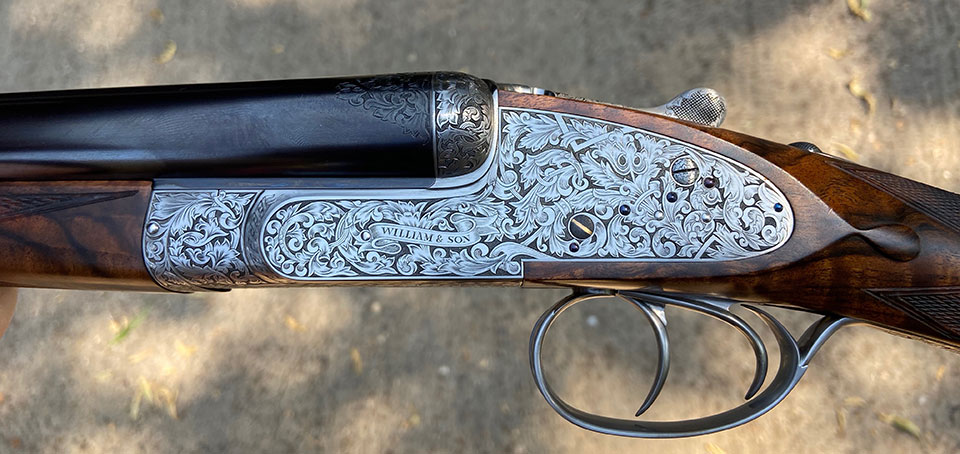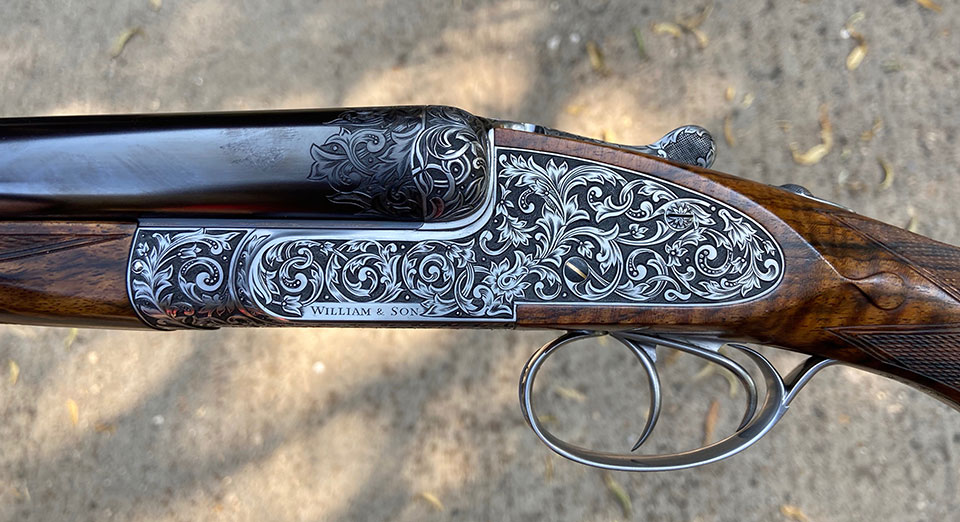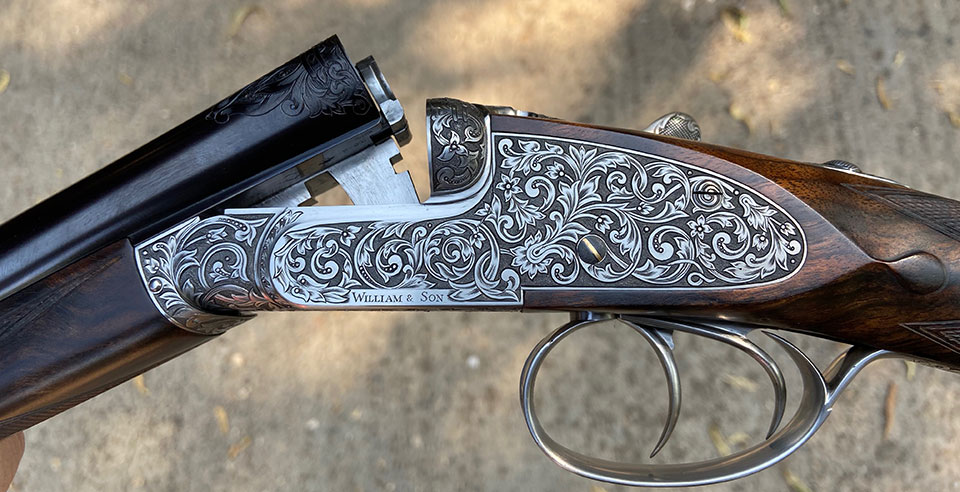William & Son sadly left the roll-call of London gunmakers last month. Over twenty years, they had created a place for themselves in the market alongside the long-established firms everyone knows.
William Asprey is the seventh generation of his family to be involved in trading luxury goods and he first began building guns under the Asprey name, before creating William & Son in 1999.
As newcomers, the firm could not trade on historic brand value but sought to compete by providing quality, English-built guns at a better value price point than the competition. A William & Son gun was created as a de-luxe Holland & Holland ‘Royal’ but it retailed for about ten thousand pounds less than a standard Holland & Holland ‘Royal’. It also came in a leather case, with branded accessories, at no extra cost.
The late Simon Clode, then Managing Director of Westley Richards, once told a mutual customer that he considered a William & Son gun to be a better version of the Holland & Holland than the one that firm currently makes. Make no mistake, if anyone in the gun trade appreciated quality, it was Simon Clode.

While Holland & Holland, Purdey, Boss, Watson Bros and Rigby all have their own workshops and factories, William & Son never did. Instead, they called upon the services of some of the best out-workers in the British gun trade to create their guns to order, overseen by Paul West, who was William & Son’s in-house gunmaker and one of the most laid-back and personable men in the business. Everyone loves Paul. His gun-making credentials are impeccable, having worked at Holland & Holland for many years.
For actioning, most firms today begin with close-to-form CNC machine produced parts in kit form. This reduces the actioning time on a Holland & Holland ‘Royal’ by 50%. Instead, William & Son opted for traditional action filing by Mark Sullivan, working from forgings.
Mark left Holland & Holland in the late 1980s and has been working quietly for the wider trade ever since. Mark told me he decided to move from Holland & Holland when his wages were £250 per week. Asprey offered him and some colleagues £500 per week to leave and build guns for them. Over a six month period, they did so and formed a tight team of gunmakers who built guns the way Holland & Holland did in 1985, before the machinery arrived.
Barrels were built by Mick Kelly, an ex-Purdey man, now freelancing, and finishing was by another of Mark’s old Holland & Holland colleagues, Colin Orchard.

Stock work was taken on by another of the best men in the country, Stephane Dupille, who himself worked for both Holland & Holland and Watson Bros before setting up his own workshop just north of London and providing his services to the big London gun-makers on a free-lance basis.
The engraving style of large foliaete scrolls on a dark, hatched background, varies from gun to gun, so each one is unique. It was developed and executed by Peter Cusack and quickly became a recognised ‘house style’ for William & Son.
Asprey had to stop building guns in 1999 when it was sold to Prince Jefri of Brunei for a reported £243.5 million. William Asprey, had to find another name under which to continue his gun-making project and William & Son was born that very year and began trading from 10 Mount Street in Mayfair, selling used guns as well as new-builds. In time, luxury goods were added to the gun-room and 14 Mount Street added to the retail footprint. In 2009, William & Son was granted a Royal Warrant by the Queen.
William Asprey took on seasoned professionals as the company expanded. Ian Andrews joined, from Purdey, to handle the gun sales and Chris Hunter, also from Purdey, came in to lead the clothing department, quickly establishing William & Son at the forefront as a supplier of quality shooting suits and covert coats for both men and women.
Until recently, the company did very well, moving from Mount Street to Bruton Street, into a beautifully created, 8,600 square-foot, space designed entirely to showcase the guns, watches, leather goods, jewellery and other expensive objects they sold to the super-rich. In 2017 the company posted profits of £26 million.
As recently as May this year, William Asprey told Walpole’s Luxury Digest; “I hope we will continue to expand our online sales, this in turn will take us to different age groups and parts of the market we have yet to reach, but we have to keep in contact and not ignore our existing and very supportive clientele.”

However, this recent economic downturn exposed the perils of businesses with high overheads. With a reported monthly rent of £200,000 to find and nobody coming through the door, as the West End this year is bereft of Arabs on shopping trips, William & Son did not last long beyond the re-opening of some businesses on July 4th this year. The Daily Mail claimed there were losses of £21 million to account for and the administrators were called in to take control. Within days, the shop was empty.
William & Son had overseas outlets and partnerships for its lines of leather goods and clothing, like Joseph’s in Richmond Texas, which is also a retailer of Purdey and Holland & Holland clothing. They will, no doubt, suffer from the withdrawal of brand support and advertising. When a company like this ceases to trade, many associated people suffer; be they staff, partners, suppliers or creditors.
In these uncertain times, we can but watch and hope that no more of our most loved firms from the sporting gun and country sports sector suffer the ultimate fate of any business in which overheads exceed orders for an unsustainable period.

During its existence, William & Son made and sold around sixty sporting guns and rifles. They remain as a legacy for future generations and if judged on quality alone, should become treasured possessions. When they appear on the market, even superb quality guns bearing names the average punter does not know, suffer from the blight of what the market calls ‘brand value’. It means that buyers are often willing to pay a great deal more money for a lesser product in worse condition if it has a name that they think gives them bragging rights among their friends.
If you are a shooting man and gun aficionado who actually recognises and appreciates quality and you are secure enough not to need the affirmation of the wider public for your choice of gun, then you would do well to seek out some recent William & Son shotguns. There are few guns that have been built in Britain (and therefore the world) in the past twenty years that can beat them on quality and prices are likely to be favourable to the buyer.
Published by Vintage Guns Ltd on




